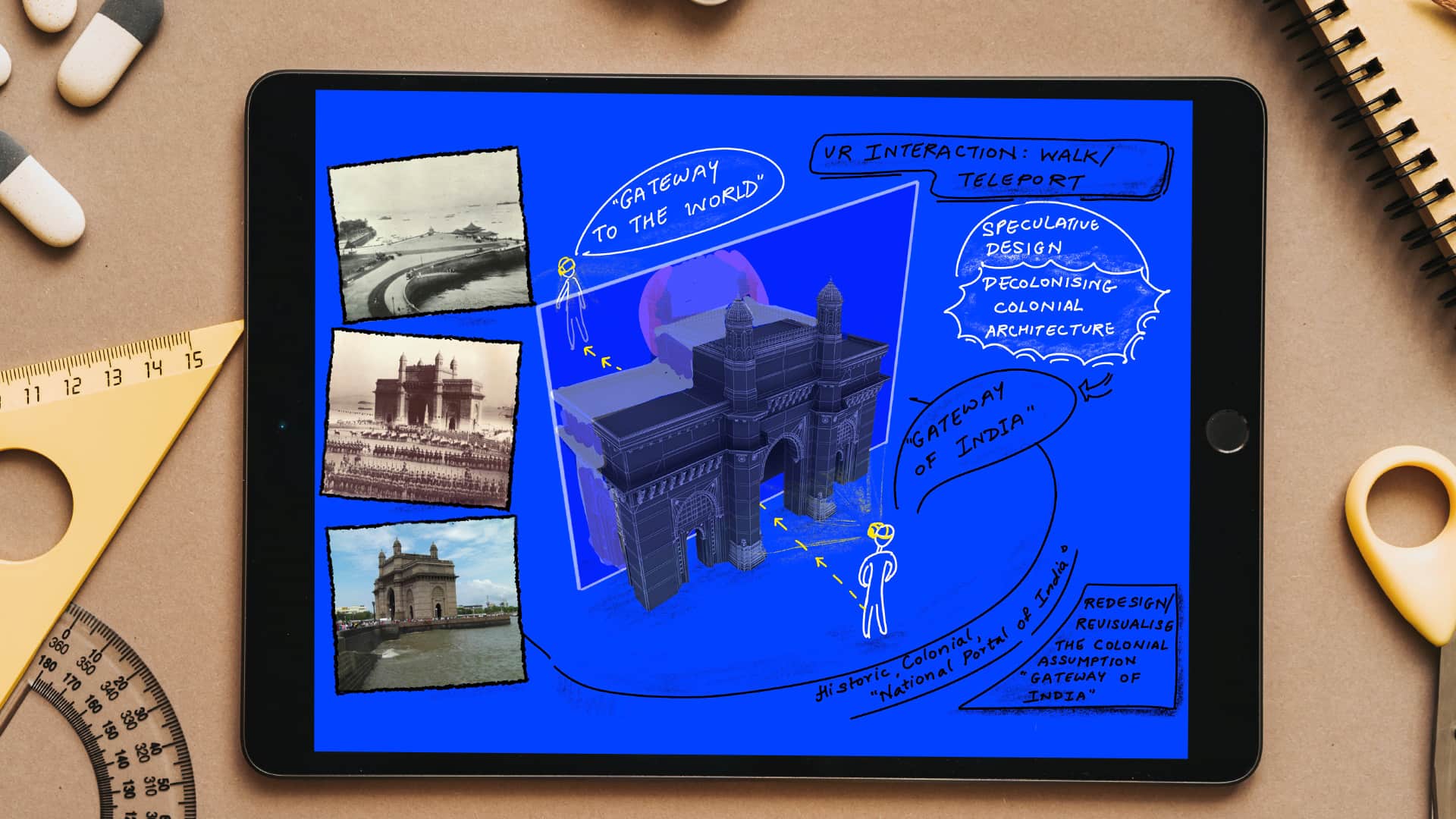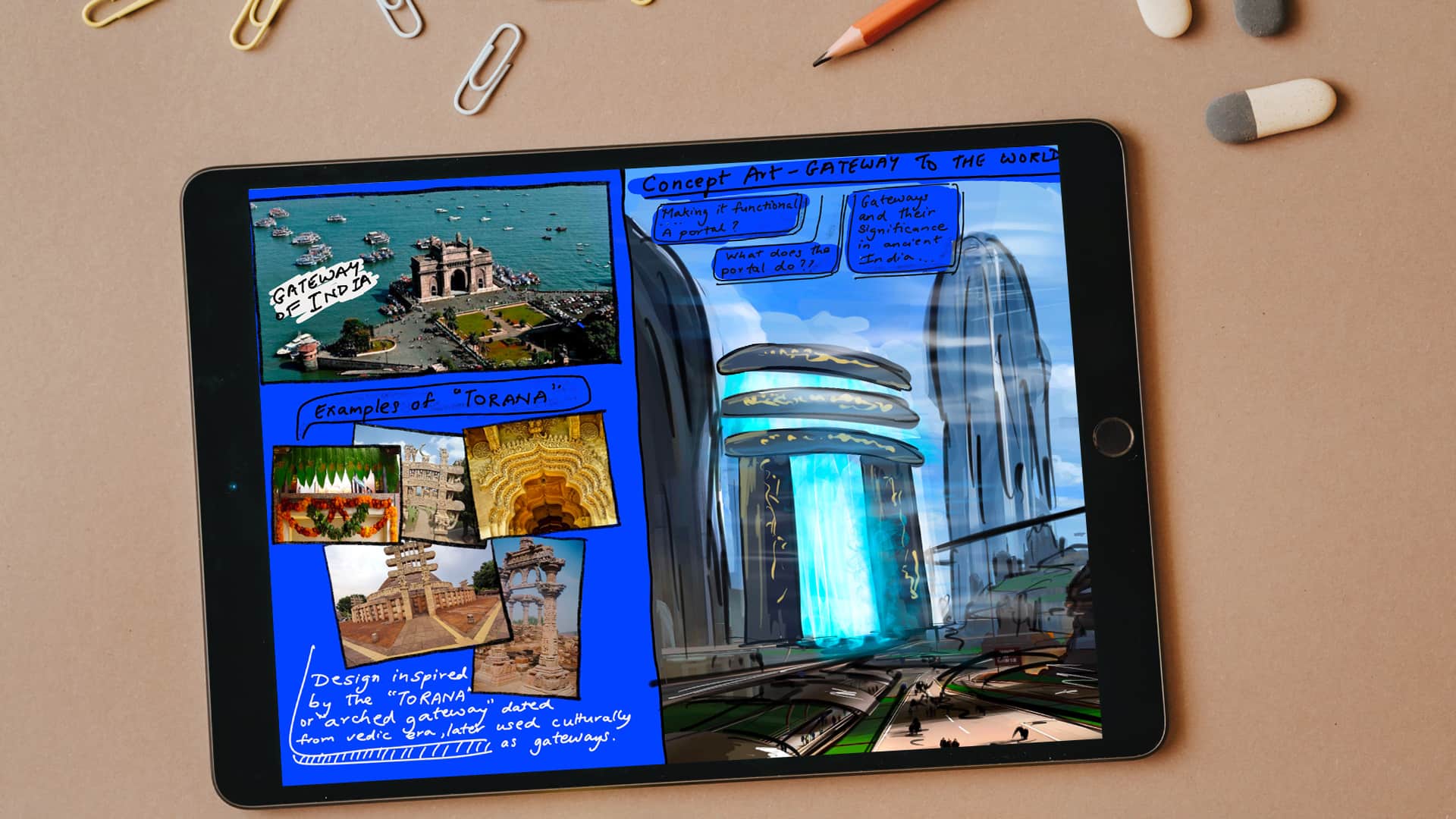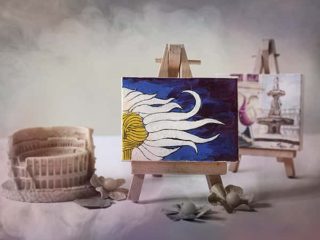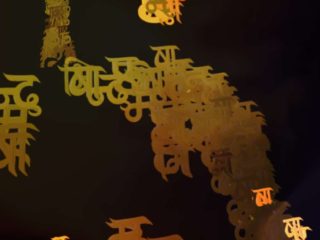Gateway to the World serves as an introductory artefact to the idea of Indofuturism. It helps familiarise those who might not have previously encountered futurism disciplines with the concept of a decolonised future. It does so by illustrating an Indian-inspired, Indian-built Gateway to the World in place of the real-world Gateway of India, which was installed by the colonisers.
Apart from being a literal gateway, it acts as a metaphorical gateway to the Indofuture world. The transformation from Gateway of India to Gateway to the World as the viewer passes through it is symbolic to the viewer’s entry in the Indofuture being imagined through this project. The absence of the Gateway of India on the other side is indicative that it has never existed, as India was never colonised.
The inspiration behind this artefact was an attempt to reimagine a colonial artefact that was a celebration of and owned by Indian culture.
Applying Speculative Design, a functional gateway or portal of from a fictional decolonised future, where India has thrived, was envisioned. By imagining this world without a history of colonisation, the artefact aimed to reposition colonised people from being subjects to becoming people with agency. As the viewer passes through the Gateway of India and reaches the other side, they saw it replaced by the Gateway to the World. The concept art visualised an interactive experience in virtual reality, while the wireframe explores potential visuals for the final version of the artefact. The medium of virtual reality helped situate the user’s body in a transitional space from the real world to the decolonised Indofuture world. The wireframe illustrated a vision of the architectural form of the Gateway to the World, that was inspired by the notion of a gateway from an ancient Indian cultural viewpoint, known as the Torana.
Construction
The Gateway to the World and its surrounding future landscape was painted using Tilt Brush (Google) seeking inspiration from the wireframe. For the Gateway of India, a high-detail realistic 3D model was used. The two distinct aesthetics for the Gateway of India (realistic) and Gateway to the World (surreal), created a striking visual contrast between the banality of the real-world and the unformed but vibrant potentialities of the Indofuturist world.
The 3D sketch from Tilt Brush was ported via Poly (Google) into Unity3D (Unity Technologies). There, VR functionality was added, in order to allow a participant to inhabit the space, move around it, and experience the transition from the real-world Gateway of India to the Indofuture. 3D models of footprints, attached to each controller, were embedded in the interface to indicate the surfaces that users could teleport to in the virtual Indofuture realm.







